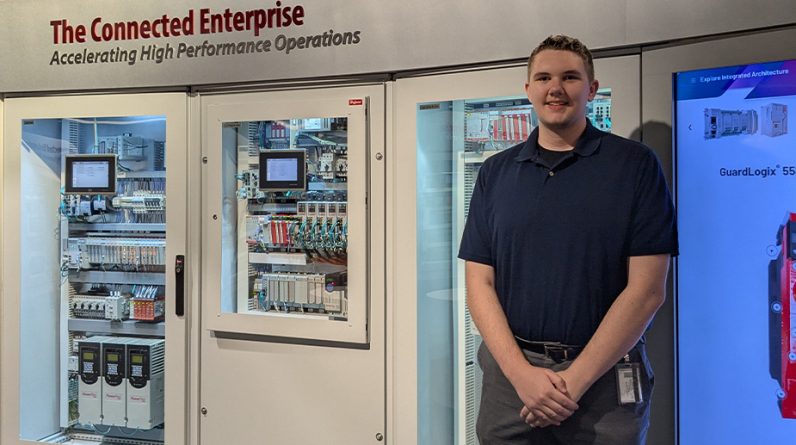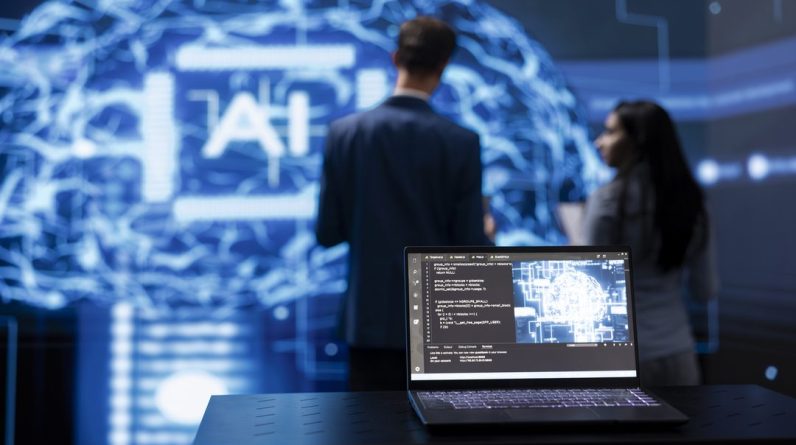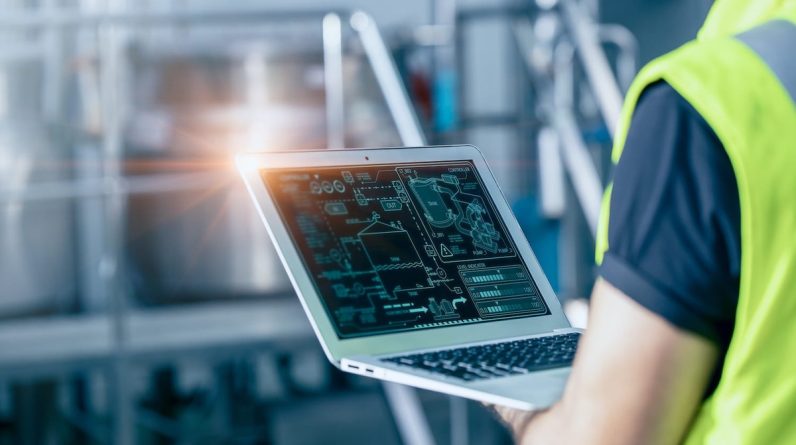
In 2020, when Terrence Wise learned the McDonald’s where he worked would be testing a new artificial intelligence program that would help take customers’ drive-thru orders, he was excited to have a “buddy” to help manage orders.
But he quickly learned that the technology did not reduce his workload. Instead, he wore his headset and listened in on the interactions between customers and the AI, making sure the ordering process went smoothly.
When something went wrong — which happened “a majority of the time,” he said, especially at the beginning — he would have to override the AI to take the customer’s order himself.
While his ears were occupied monitoring the AI, he was expected to keep his hands busy by cleaning tables or stacking trays.
“You have to be ready to respond when the AI fails,” Wise said. “It’s added to my workload, because I’m not only listening and waiting to hop in if the person isn’t clear enough or it’s taking too long, but also doing other things.”
Wise believes that artificial intelligence won’t replace jobs in fast food or other service industries as much as it will supplement workers’ tasks and redirect their time and energy elsewhere.
“I’ve seen technology improve the way we work, the way we clean, even the way we operate the restaurant, but I’ve never really heard about that kind of technology taking the place of workers,” he said.
Others aren’t so sure.
A recent analysis by (un)Common Logic found that 10.2% of workers in the Kansas City area — about 110,000 workers — are at risk of AI-related job displacement, the seventh-highest rate among large metropolitan areas.
More than 45% are at risk of having their job automated by computers generally, the report added.
One of the studies the report is based on, which investigated the vulnerability of different occupations to any kind of automation, found that fast food workers — as well as accountants, nuclear reactor operators, receptionists and tractor operators, among others — are at high risk of automation.
Nearly 9% of workers have high AI exposure & high automation risk
 Source: (un)Common Logic analysis of Felten et al. (2021), Frey & Osborne (2013) data | Image Credit: (un)Common Logic
Source: (un)Common Logic analysis of Felten et al. (2021), Frey & Osborne (2013) data | Image Credit: (un)Common Logic
Productivity Push
Wise, who now works as a rideshare driver and labor organizer with Stand Up KC and the Missouri Workers Center, said he has heard this sort of thing before.
Having worked in the fast-food industry for almost three decades, he’s seen the introduction of many new technologies, from electronic signs to automated frying machines to self-order kiosks and fancy soda machines with dozens of flavors.
Every new addition has changed the way he and his colleagues worked, he said, but none of them significantly displaced people’s jobs. Automating basic tasks like changing the letters on an outdoor sign or shaking the fries in the frying basket diverted workers’ attention to other tasks and increased managers’ expectations for worker efficiency.
“When we think about the old days, I used to just have to deal with a lobby full of folks, but now … folks have online ordering, plus the kiosks, and a tablet for DoorDash, Grubhub, and Instacart,” Wise said. “So not only am I dealing with the customers in the lobby, but I’m also dealing with orders coming in from the kiosks and all the different apps.”
“Instead of, 10 years ago, doing 100 orders an hour, now I’m doing 300 orders an hour,” he added.
Having worked as a labor organizer and advocate for over a decade, Wise said he saw the new system created by automation even before self-ordering became commonplace in U.S. fast-food joints.
“Before we had kiosks here in our country, I was over in Paris, France, organizing and talking to McDonald’s workers there and going into stores, and it was the first time I saw 30 kiosks in a McDonald’s. But it was also the first time I saw 30 workers behind the line,” Wise said. “Even when we see an increase in things like kiosks and automation, it increases the workload for folks.”
Wise said he sees the human element of service work as another reason AI won’t completely take over positions in the fast-food industry.
“I don’t ever think we’ll get to the point where you’ll pull (through the drive-thru) and (AI) will take your order and then you get to the window and stick your card in and you still won’t see a human,” he said. “I don’t think it’s trending that way.
“The folks I interact with, family members, folks in the community, folks who come into the restaurant, even folks I give rides to, no one thinks it’s a replacement for that human element,” he added.
The Human Element
While the human element has limited the growth of artificial intelligence and other automation in some industries as it has flourished in others, this has changed in recent years, according to Chris Kuehl, an economist and the managing director at Armada Corporate Intelligence.
“Technology and robotics have been expanding in some sectors for years. I mean, manufacturing has been adopting these technologies for well over 15, 20 years, and many other sectors have been catching up,” Kuehl said. “It’s been inhibited a little bit by the willingness of the consumer to accept it, but really, since the pandemic, we’ve become a lot more comfortable with that kind of remote interaction.”
In industries where automation has been more accepted, Kuehl said, the Kansas City area has felt the effects in recent decades.
“Given the fact that manufacturing has been important here, you can see where the automation and robotics have revolutionized the auto sector. … Even those small-job shops which in the past would have relied on people still have people, but they better know how to run a machine,” Kuehl said. “We used to just hire welders, but now they’d better know how to program a robot welder.”
Duke Dujakovich, president of the Greater Kansas City AFL-CIO — which represents 57 unions across a variety of professions in the Kansas City area — said he is confident many of his workers will not be displaced by AI.
“The automation going on in the factories has always been the kind of thing that people point to,” he said. “But when I look at AI and what it can replace, it’s a lot of the non-physical jobs. I don’t see AI replacing my roofers. It’s just not gonna happen. AI will assist firefighters, but it’s not going to eliminate them.”
Dujakovich said he suspects many of the Kansas City-area jobs considered “at-risk” by the report are federal positions and other non-physical roles.
“I can see architects and engineers being impacted a lot by AI,” he said. “I can see AI designing a bridge, but the actual iron worker and the crane operator that build the bridge, I don’t see them being replaced.”

 Duke Dujakovich, president of the Greater Kansas City AFL-CIO, uses the generative AI platform ChatGPT to help him write an email to members on July 29, 2024, at the union’s office in downtown Kansas City. (Ceilidh Kern | Flatland)
Duke Dujakovich, president of the Greater Kansas City AFL-CIO, uses the generative AI platform ChatGPT to help him write an email to members on July 29, 2024, at the union’s office in downtown Kansas City. (Ceilidh Kern | Flatland)
Kuehl agreed that industries like insurance and accounting will be significantly affected.
“I’m the economist for, like, 12 (certified public accountant) societies, and every single one of them that I’ve seen in the last year has had a program on what AI means to accounting. In every single talk, they said, ‘It is going to replace accounting jobs, but it’s not necessarily going to mean that accountants will lose their jobs,’” he said. “It just means that, if you have an accounting firm and it took five accountants to handle a particular task, with AI, it’s down to one.”
Instead of firing people, Kuehl said, these firms are planning to use AI to ease themselves into a new, post-baby boomer era.
In the next decade, he said, 76 million baby boomers will reach retirement age, and a current shortage of young people with the right qualifications to replace them means that, without artificial intelligence, accounting firms would be left without enough labor to meet demand.
However, with artificial intelligence, firms can automate some tasks and redirect the remaining workers to other duties, meeting demand even as the number of available employees declines.
While this addresses the short-term problem of companies not being able to find qualified workers, Kuehl said, it can also “reduce the potential for hiring” in the future as companies find ways to operate with fewer workers.
For accountants, he said, artificial intelligence could be used to take care of routine tasks, while the remaining workers are tasked with duties the technology can’t manage, including, increasingly, taking on more advisory or consultative roles.
“A lot of these operations are beginning to change their fundamental market strategy,” Kuehl said. “If you’re no longer doing a routine, what do you do? Frequently, it means you become more advisory.”
This isn’t just the case for accounting, however. Many industries are struggling to find qualified workers and are turning to AI to help fill the gap, Kuehl said.
Systemic Challenges
This shortage is the product of systemic challenges, according to Clyde McQueen, president and CEO of the Full Employment Council, an organization that connects job seekers with training and open positions.
“We still have workforce shortages that are based on our absence of a workforce system infrastructure in which training is important, but also child care and transportation,” he said. “Some places that use (robots or AI) do it because they have to, because of a lack of labor.
“There will be some of that because we do still have a shortage of those things, but I think something that is just evident is that we’ve got to increase our workforce participation rates, because right now, we still have a 20-30% difference between the number of people that we have available for work and the number of people actually applying for work,” he added.
In addition to issues with the infrastructure underlying the workforce system, McQueen said, the gap in workforce participation is due, in part, to the fact that many job applicants don’t have the kinds of skills employers are seeking.
“Businesses talk with us specifically about the skill of the people to meet the AI or machine demand they have. Their biggest focus right now is accessing the skilled population,” McQueen said. “Increasingly, the workers they hire have to be able to hit the ground running with minimal requirements, but also be willing to be constantly undergoing a training regimen.”
This regimen, McQueen said, involves workers completing a variety of trainings — to both be able to handle current responsibilities and remain essential even as AI evolves and takes on new kinds of tasks — and continuing their education to stay competitive in their industry.
“Your educational workforce training is ongoing. It’s not static,” he said.
Compared to other types of automation, AI will have a greater impact on high-income workers

 Source: (un)Common Logic analysis of Felten et al. (2021), Frey & Osborne (2013), Bureau of Labor Statistics data | Image Credit: (un)Common Logic
Source: (un)Common Logic analysis of Felten et al. (2021), Frey & Osborne (2013), Bureau of Labor Statistics data | Image Credit: (un)Common Logic
A New World of AI Work
The challenge, Kuehl said, is that the automation of entry-level positions and the growing focus on increased training before employment will prevent many from advancing in their professions and may create a “permanent underclass” of workers who cannot reach the middle class.
“Probably the single biggest worry when it comes to technology is that it removes many of those entry-level, starter jobs … It used to be that you’d hire somebody to do something very simple, and over time, they would learn new skills and advance,” Kuehl said. “Well, there are no starter jobs now, so you have to have somebody who’s already trained the minute you’ve hired them.”
“Even the manufacturers and construction companies, transportation companies, are all like, ‘No, I’m not gonna hire somebody to fog up a mirror and train them. You need to be trained before I hire you,’” he added.
Despite these challenges, McQueen said, there is a silver lining to the introduction of AI and other advanced technologies — the creation of new, better-paying positions to build, program, maintain, and repair the software and hardware that AI needs to run smoothly.
“People just look at AI as a negative and don’t look at the fact that it is an industry in and of itself that has to be supported, because the machines break down the same way they do in manufacturing,” he said. “You don’t think about the support infrastructure, the repair infrastructure, the maintenance infrastructure that has to be sustained in order to make sure that these AI pieces still work.”
“People just look at AI as a negative and don’t look at the fact that it is an industry in and of itself that has to be supported, because the machines break down the same way they do in manufacturing.”
– Clyde McQueen, president and CEO of the Full Employment Council
This was the case with the manufacturing industry’s transition to automation over the last several decades, during which time around 10 million jobs were created to install, program and service the new machines on the production line, Kuehl said.
However, he said, there is another lesson to take away from the manufacturing industry’s experience — most of the new jobs were not filled by laid-off workers.
“The people who lost their jobs in the manufacturing sector were overwhelmingly in things like material management. They drove forklifts. They stacked pallets. They loaded and unloaded trucks. They did that kind of work — well, that got replaced, and the guy who drove the forklift didn’t suddenly become someone who could program a computer,” Kuehl said. “You gained jobs, but they were new jobs with new people.”
“When you lose your job and you don’t have the qualifications to take the ones they’ve created, what do you do? You saw a lot of those manufacturing workers go into the service sector back then, but those jobs don’t pay as well,” he added.
Wise witnessed this firsthand, both through his advocacy work and with his own family.
“A lot of the middle-class workers that had manufacturing jobs, had good warehouse jobs, were brought into (the service) industry to work. My grandmother and everyone else went to these jobs to make ends meet,” Wise said. “Some of them got two of them.”
Besides training, Wise said that to better protect workers whose industries are being impacted by AI, there needs to be “democratic decision-making.”
“For folks in this industry, there’s no knock against AI and technology and advancement when it’s done in a democratic way, where we have a say in it not only in how it’s used, but how we’re trained for it and how it’s implemented,” he said.
“I’ve seen it help workers when it comes to injuries and doing our jobs better. But I’ve seen it add to the stress and add to the workload, as well,” Wise said. “That’s why, with any kind of advancements made in the workplace, whether it’s AI or another technology, not only the employers but the workers, as well, should have a say in it.”
Ceilidh Kern is a graduate of the University of Missouri journalism school and a summer intern at Kansas City PBS/Flatland and Missouri Business Alert, a member of the KC Media Collective.






